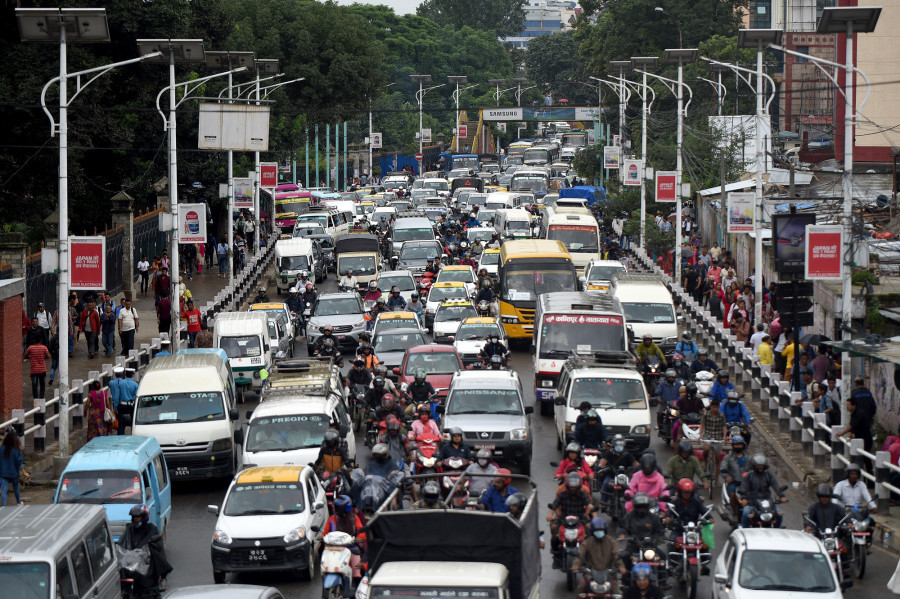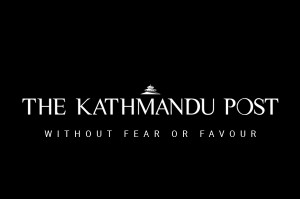Valley
As life seems to return to normal in Capital, traffic jams are common again
Traffic authority mobilises volunteers to manage cars and pedestrians, but residents not convinced it will be of help.
Anup Ojha
Sudeep Acharya bought a scooter five months ago to avoid commuting on public vehicles where risk of transmission of Covid-19 is high.
The other reason he bought the two-wheeler was to save time during his commute. “The microbuses that ply between my home in Bohoratar and my office in Anamnagar were often late because they would get stuck in traffic jams or wait inordinate lengths of time for passengers,” said Acharya, who works for a research centre.
When the nationwide lockdown was lifted in late July last year and the odd-even vehicle scheme was imposed in Kathmandu Valley in the second week of September, Acharya didn't have any problem commuting to work.
“I used to reach my office in 15 minutes on my scooter. On public vehicles, it would take me nearly an hour,” said Acharya.
But that all changed after the odd-even vehicle rule was lifted and daily life somewhat returned to normal. Acharya’s commute is no longer smooth these days.
“Even on a scooter, it takes me nearly an hour to reach my office,” he said.
Traffic in Kathmandu Valley has returned to the pre-pandemic days, with frequent snarl-ups, particularly during rush hours.
To deal with the problem of traffic jams, the Metropolitan Traffic Police Division on Wednesday announced to deploy 130 scouts at major road sections.
But that is hardly any consolation for daily commuters like Acharya. They are resigned to the fact that Kathmandu’s traffic condition is not going to improve.
“Wherever you drive or take a public vehicle in Kathmandu, you have to set aside an extra hour for traffic jams. Traffic jams have become commonplace and there is no escaping it,” said Bhojindra Timelsena, whose business requires him to travel to different parts of the city daily to deliver goods.
“Sometimes I need to reach Kalanki or New Bus Park from Pepsikola for delivery, and if I ride during the day time, my entire day is ruined,” Timelsena said. “Just by deploying volunteers on the street is not going to solve the perennial problem of traffic congestion.”
However, SP Shyam Krishna Adhikari, spokesperson for the division, believes that the deployment of volunteers will ease the city’s traffic flow.
“People do not use zebra crossings to cross the road. The volunteers will enforce the zebra crossing rule and this alone could help reduce traffic jams by 15 to 20 percent,” claimed Adhikari.
He nevertheless concedes that Kathmandu’s traffic woes have no immediate solution as long as the city’s road infrastructure remains the same.
“The city needs better road infrastructure, flyovers and underpasses to accommodate the growing number of vehicles. We have about 1.5 million vehicles operating daily in Kathmandu Valley. This is the main reason behind traffic jams,” said Adhikari.
When the odd- even vehicle rule was in place, there were fewer vehicles on roads, hence fewer traffic jams.
“The traffic volunteer programme is aimed at managing the vehicles and pedestrians. We also plan to increase the number of volunteers in the coming days,” said Adhikari.




 8.12°C Kathmandu
8.12°C Kathmandu.jpg)









%20(1).jpg&w=300&height=200)

